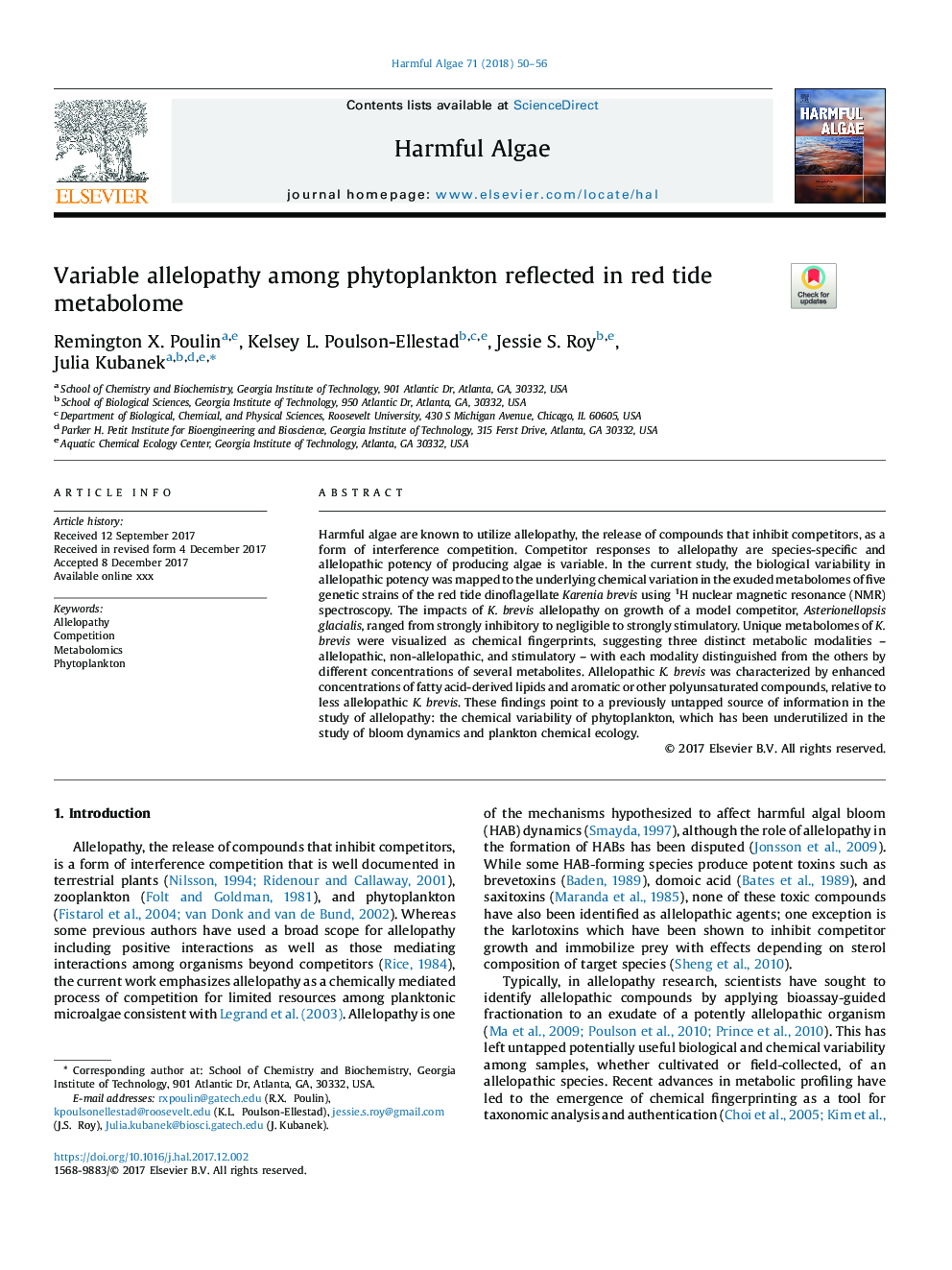| Article ID | Journal | Published Year | Pages | File Type |
|---|---|---|---|---|
| 8885724 | Harmful Algae | 2018 | 7 Pages |
Abstract
Harmful algae are known to utilize allelopathy, the release of compounds that inhibit competitors, as a form of interference competition. Competitor responses to allelopathy are species-specific and allelopathic potency of producing algae is variable. In the current study, the biological variability in allelopathic potency was mapped to the underlying chemical variation in the exuded metabolomes of five genetic strains of the red tide dinoflagellate Karenia brevis using 1H nuclear magnetic resonance (NMR) spectroscopy. The impacts of K. brevis allelopathy on growth of a model competitor, Asterionellopsis glacialis, ranged from strongly inhibitory to negligible to strongly stimulatory. Unique metabolomes of K. brevis were visualized as chemical fingerprints, suggesting three distinct metabolic modalities - allelopathic, non-allelopathic, and stimulatory - with each modality distinguished from the others by different concentrations of several metabolites. Allelopathic K. brevis was characterized by enhanced concentrations of fatty acid-derived lipids and aromatic or other polyunsaturated compounds, relative to less allelopathic K. brevis. These findings point to a previously untapped source of information in the study of allelopathy: the chemical variability of phytoplankton, which has been underutilized in the study of bloom dynamics and plankton chemical ecology.
Related Topics
Life Sciences
Agricultural and Biological Sciences
Aquatic Science
Authors
Remington X. Poulin, Kelsey L. Poulson-Ellestad, Jessie S. Roy, Julia Kubanek,
